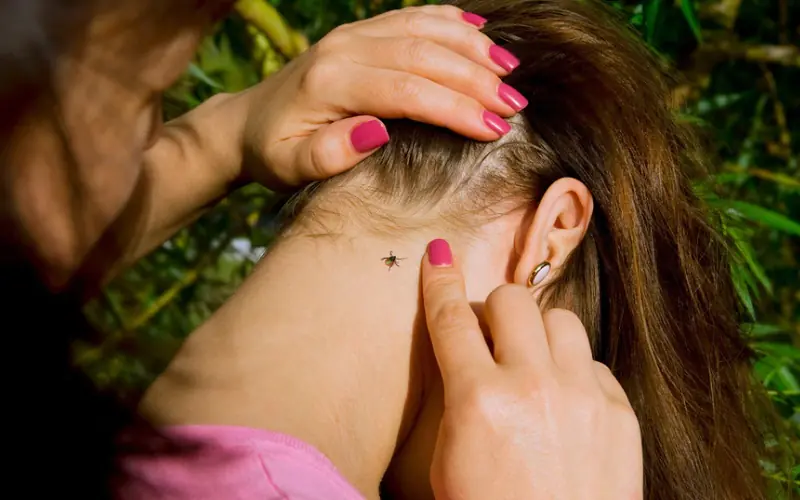Before looking for a marinade recipe for barbecue, it would be a good idea to find out how to remove a tick and what to do after a bite. Familiarization with simple rules will help you avoid complications after a pleasant picnic in nature.
Prevention and first aid for tick bites
After returning home from picnics, carefully inspect your clothes and body, paying special attention to the area around the ears, along the hair growth area, between the fingers, armpits and groin, as these insects prefer the most delicate areas of the body. Also pay attention to everything that came home with you from the forested area, especially the first spring flowers. On their leaves, ticks can be delivered directly to your home on a “charter flight”.
Tick bite: symptoms
- the temperature rises sharply - up to 40 °C;
- Strong headache;
- nausea, vomiting;
- weakness that accompanies muscle pain in the back, lower back, neck and limbs;
- redness of the skin of the face, neck, chest, conjunctivitis.
Important:
-
these symptoms appear if the tick is a carrier of tick-borne encephalitis or borreliosis.
-
When a deadly disease spread by ticks, Lyme disease, red circles appear around the bite. If such a rash occurs, you should immediately consult a doctor. Many experts are confident that if you correctly remove the tick within 24 hours after the bite, the disease can be avoided.
-
Tick saliva has an anesthetic property, which may cause numbness in the bite area. Because of this, a person does not immediately feel that the tick has taken root. Therefore, it is extremely important to carefully examine your body and clothing.
At the slightest opportunity, it is better to go to the emergency room. If this is impossible in this situation, then you must try to remove the tick yourself, but following all the rules:
-
Take tweezers and unscrew them counterclockwise - very carefully, like a cog from a gold watch, so that later you don’t have to remove individual parts of the tick with a scalpel.
-
Contrary to popular stereotypes, you should not pour oils or other air-tight compounds onto the site of a tick bite - yes, the tick will begin to suffocate and will crawl out for a while. But! The maximum concentration of the virus is in the salivary glands, and with such a cataclysm, the tick becomes very sick, and it shoots a gigantic dose of the virus into its bite.
-
After removing the tick, you need to examine the insect under a bright white light: the number of legs and antennae should be odd, i.e. the proboscis in the center should not remain in the skin. If there is no proboscis, go to the emergency room immediately and have it removed.
-
The bite site should be disinfected with iodine or alcohol.
-
Doctors recommend placing the removed tick in a jar and taking it to the laboratory for PCR diagnostics and emergency prevention of diseases carried by these insects.
How to protect yourself from ticks:
-
Use various types of repellents that can protect both the body and clothing;
-
Wear light-colored clothing, which makes these small parasites easier to see;
-
Do not sit or lie down directly on the grass;
-
If the air temperature allows, make sure that your clothes cover your neck and ankles as much as possible;
-
Wear a hat.



